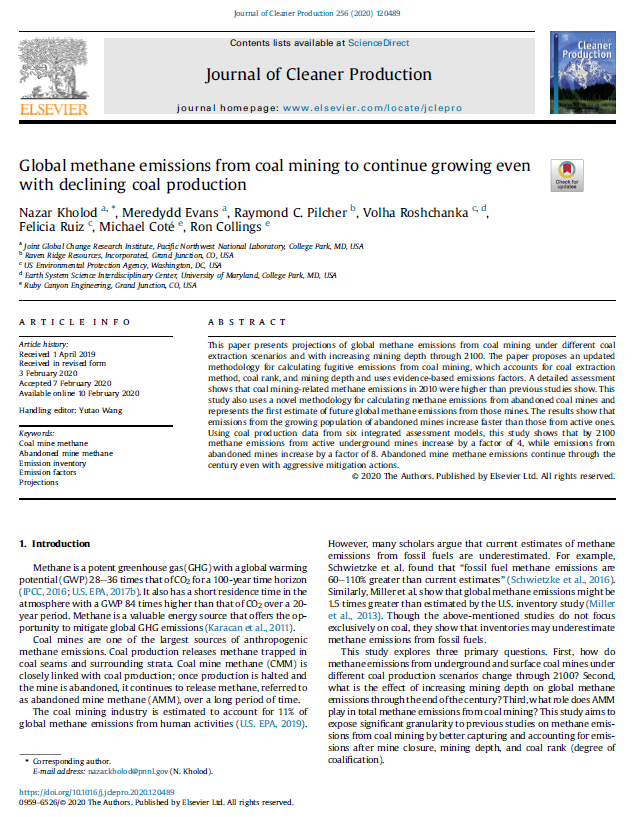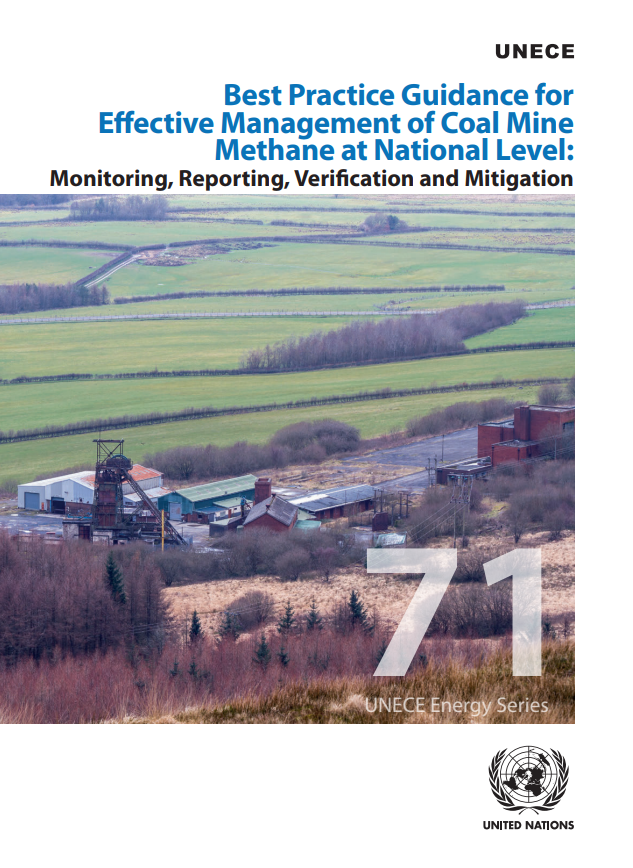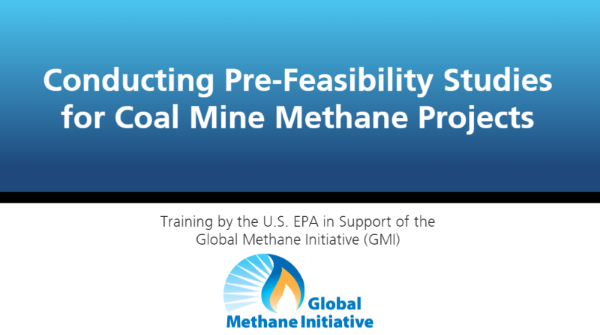Recent Resources
Check out these featured resources. For a complete list of available coal resources, including technical documents, presentations, and tools, please visit the resources page.
International Coal Mine Methane Projects List (2024)
This Excel document provides comprehensive information on approximately 500 coal mine methane recovery and utilization projects at coal mines worldwide, including projects that are operating, in development, or planned.
Actions for Scaling Up Mitigation of Methane Emissions from Coal Mines (2023)
This document provides a list of concrete ideas for actions that could scale up projects on the capture and use of methane at coal mines. The list is based on need statements and ideas proposed during the 21-22 March 2023 GMI Coal Mines Subcommittee meeting, held in partnership with the United Nations Economic Commission for Europe (UNECE).
Basics of Coal Mine Methane (Spanish) (2023)
Esta capacitación fue desarrollada por la Agencia de Protección Ambiental de los Estados Unidos (USEPA) en apoyo de las actividades voluntarias para reducir las emisiones de metano en el marco del Programa de Alcance del Metano de Capas de Carbón (CMOP) y la Iniciativa Global de Metano (GMI).
Brainstorming Session Notes on Solutions to the Top Barriers to Coal Mine Methane Project Development (2023)
This document summarizes feedback that was obtained during the brainstorming session held at the 32nd GMI Coal Mines Subcommittee meeting on 22 March 2023. Participants consisted of GMI Delegates, GMI Project Network members, and United Nations Economic Commission for Europe (UNECE) Group of Experts on CMM. The brainstorming session aimed to identify approaches and solutions to the three CMM project barriers that were ranked as being the most relevant.
Best Practice Guidance for Effective Management of Coal Mine Methane at National Level: Monitoring, Reporting, Verification and Mitigation (2022)
GMI led the development of this resource on monitoring, reporting and verification (MRV) of methane emissions from coal mining. The report, Best Practice Guidance for Effective Management of Coal Mine Methane at National Level: Monitoring, Reporting, Verification and Mitigation, was published jointed with the UNECE Group of Experts on Coal Mine Methane and Just Transition. The document aims to assist countries with designing national systems to quantify and report methane emissions from coal mines. National MRV programs have the potential to not only help countries better understand their emissions from coal mining, but also to identify opportunities for mitigation. In particular, MRV can help assess and track the effectiveness of adopted climate policies.
Basics of Coal Mine Methane Training (2022)
This training provides basic information about methane that is emitted through coal mining and summarizes potential mitigation options. The following topics are covered in the course:
- Why is there methane in coal?
- What are the primary methods of extracting coal?
- What are the characteristics of methane emissions from coal mines?
- How is methane captured using mine ventilation and gas drainage?
- What are the beneficial uses of captured methane?
Conducting Pre-Feasibility Studies for Abandoned Mine Methane Projects Training (2022)
This course introduces principles for assessing the potential of developing projects to mitigate Abandoned Mine Methane (AMM). Determining if an AMM project is feasible requires an assessment of the project’s potential through a pre-feasibility study. Such studies are typically carried out by a project developer, or another third party, in partnership with a government organization. AMM project developers, third parties, mining company personnel, and government officials can all benefit from this training.
Conducting Pre-Feasibility Studies for Coal Mine Methane Projects Training (2021)
The U.S. EPA is developing this training course in support of the GMI and in conjunction with the United Nations Economic Commission for Europe (UNECE). This course introduces principles for assessing the potential of developing projects to capture and/or use Coal Mine Methane (CMM). The introduced general approach should be underpinned by mine-specific data and analyses, allowing the principles to be tailored to the unique conditions at each mine. Ideally, such an assessment will lead to project development and implementation.
This training is available in English (2021) and Chinese (2022).
Pre-Feasibility Study for Methane Drainage and Utilization at the San Juaquin Mine, Antioquia Department, Colombia (2021)
This pre-feasibility study was completed to determine the feasibility of a coal mine methane (CMM) capture and utilization project at the San Juaquin Mine. Specifically, this study aimed to evaluate the technical and economic viability of methane drainage utilizing vertical pre-drainage boreholes drilled from the surface and in-seam pre-drainage boreholes drilled from within mine workings, and to identify end-use options.

International Coal Mine Methane Projects Database (2021)
This Excel document contains information on over two hundred coal mine methane recovery and utilization projects operating, in development, or planned around the world in both Global Methane Initiative partner and non-partner countries.

Global Methane Emissions from Coal Mining to Continue Growing Even with Declining Coal Production (2020)
Coal mines are one of the largest sources of anthropogenic methane emissions. As the world produces more coal, coal mines get deeper every year, and methane emissions grow with increasing mining depth. Mine operators also abandon old coal mines, which still emit methane into the atmosphere. The U.S. EPA, in collaboration with the Global Methane Initiative and several other organizations, co-authored this paper that presents projections of global methane emissions from coal mining under different coal extraction scenarios and with increasing mining depth through 2100. The study estimates methane emissions from underground and surface coal production while accounting for the increase in mining depth using several new and compiled data sets.

Coal Mine Methane Country Profiles (2020)
This document contains individual, comprehensive profiles that characterize the coal and coal mine methane sectors of 37 countries—29 Global Methane Initiative partners and an additional eight coal-producing nations. In addition, an Introduction section provides additional methane information, summary tables, and country statistics.











